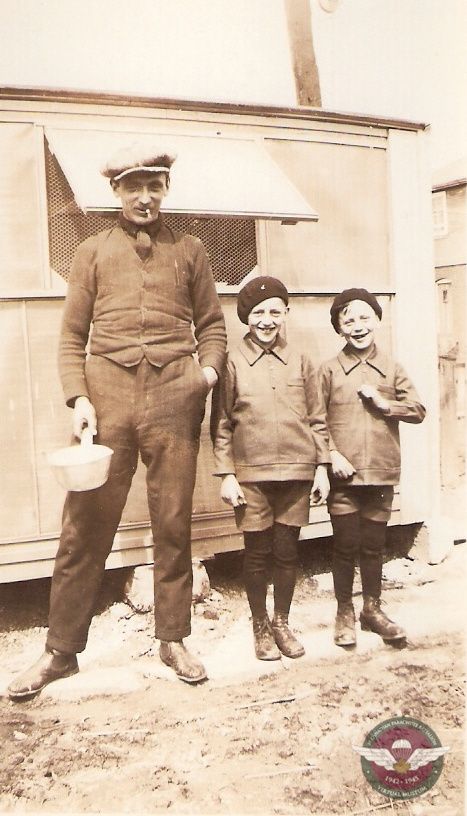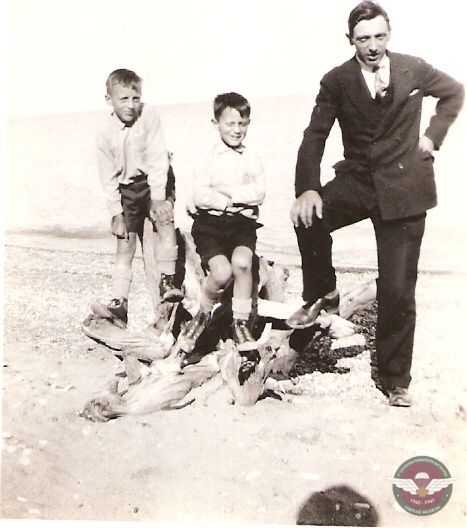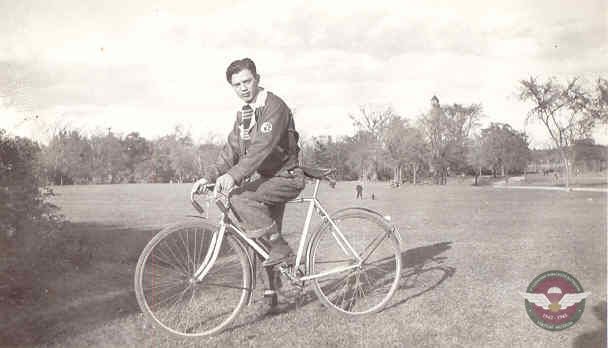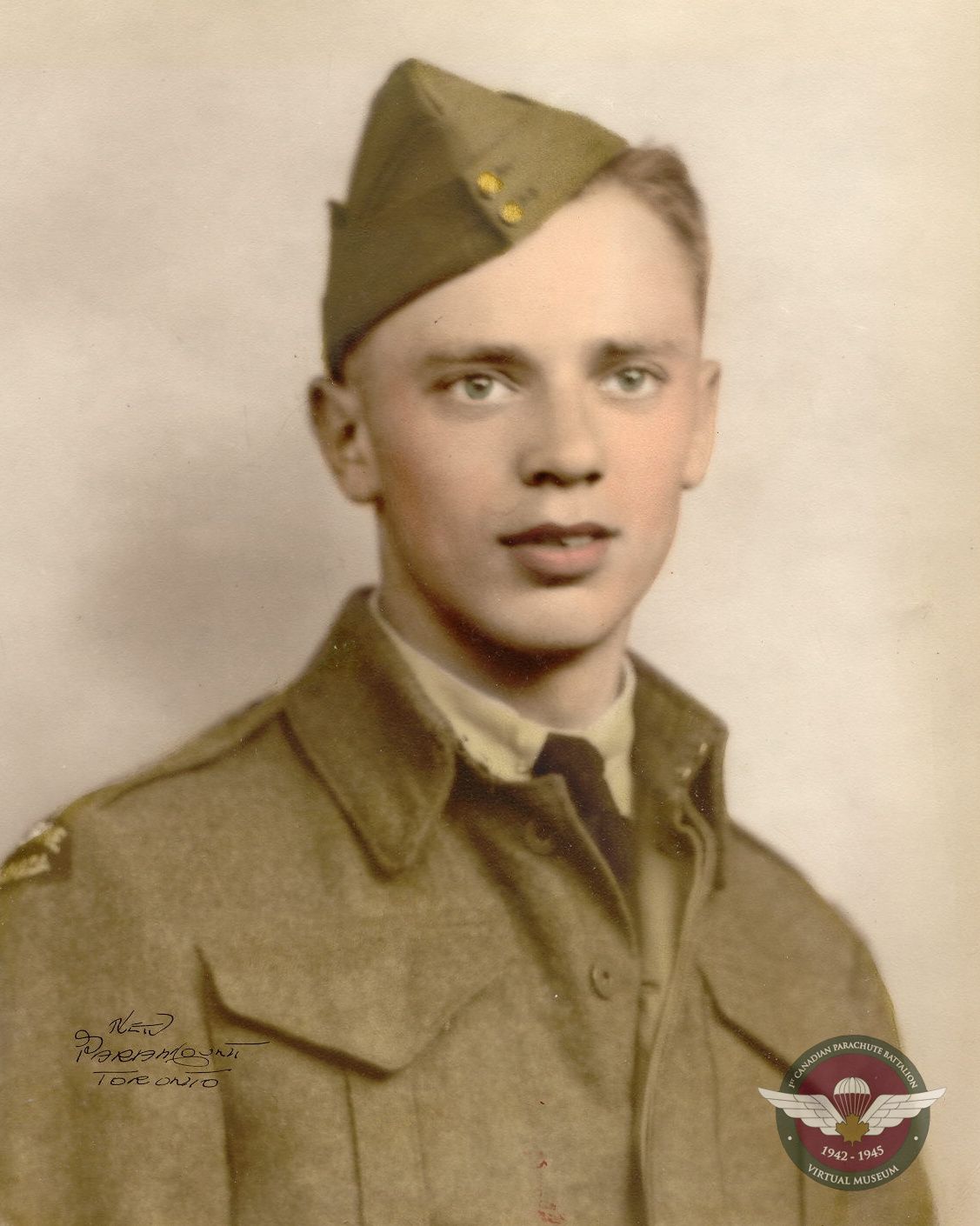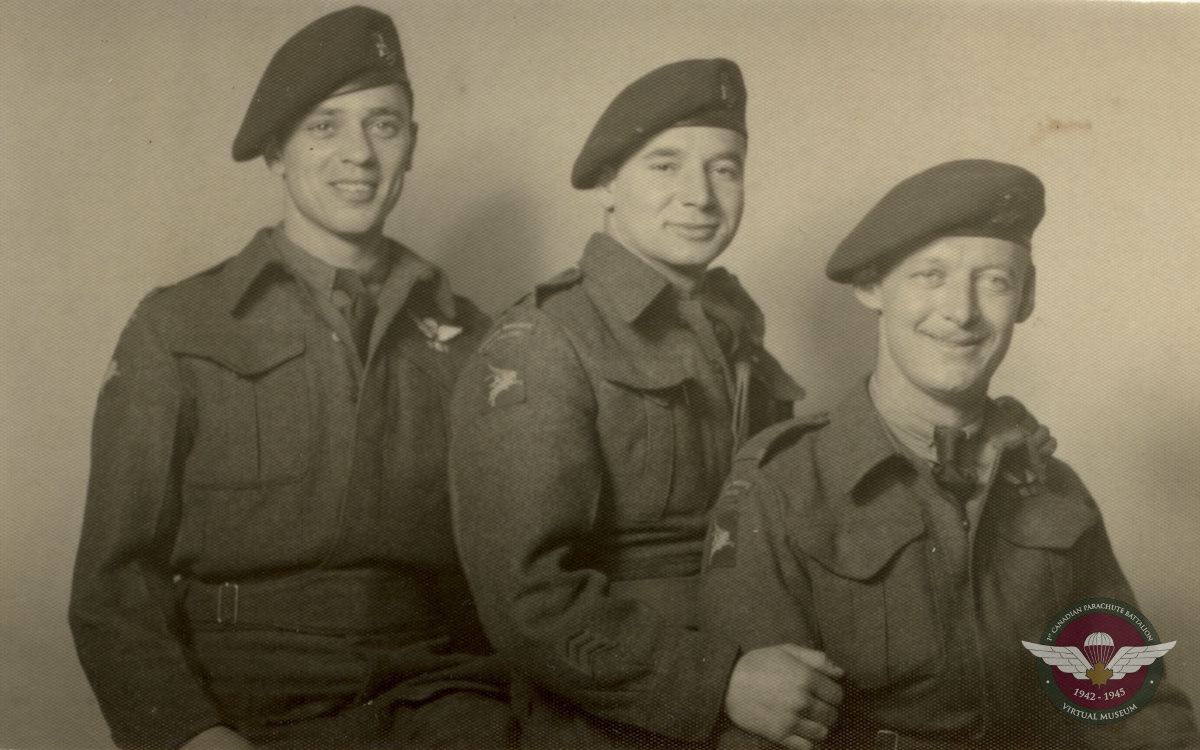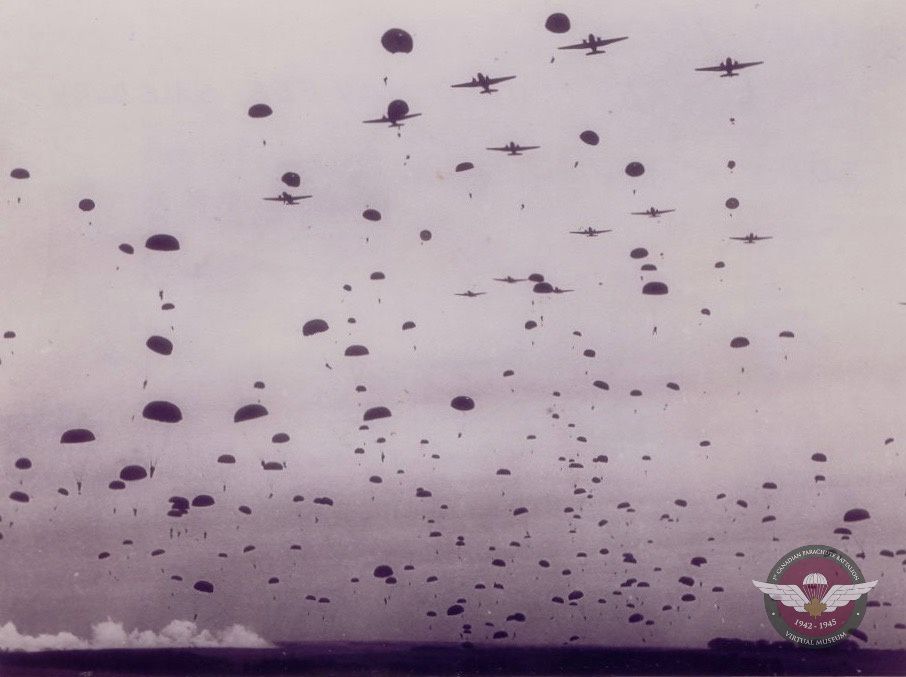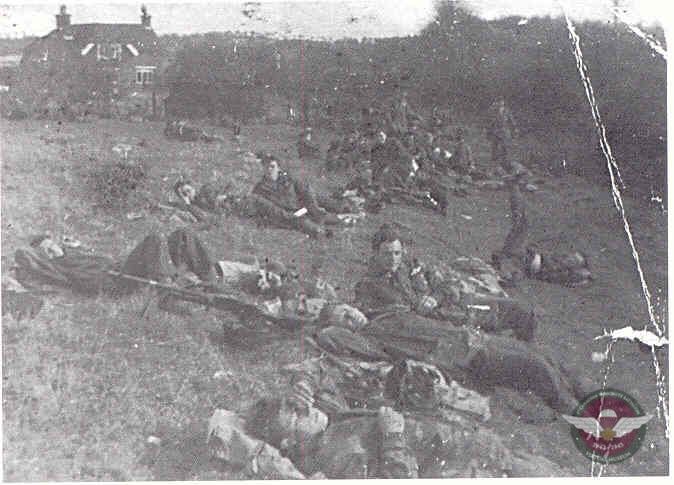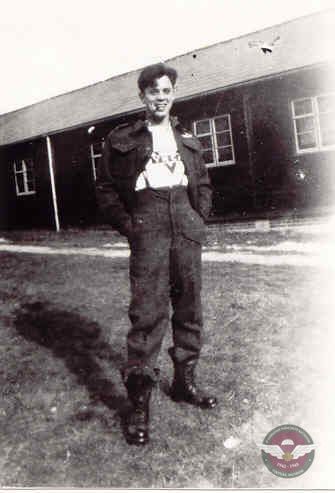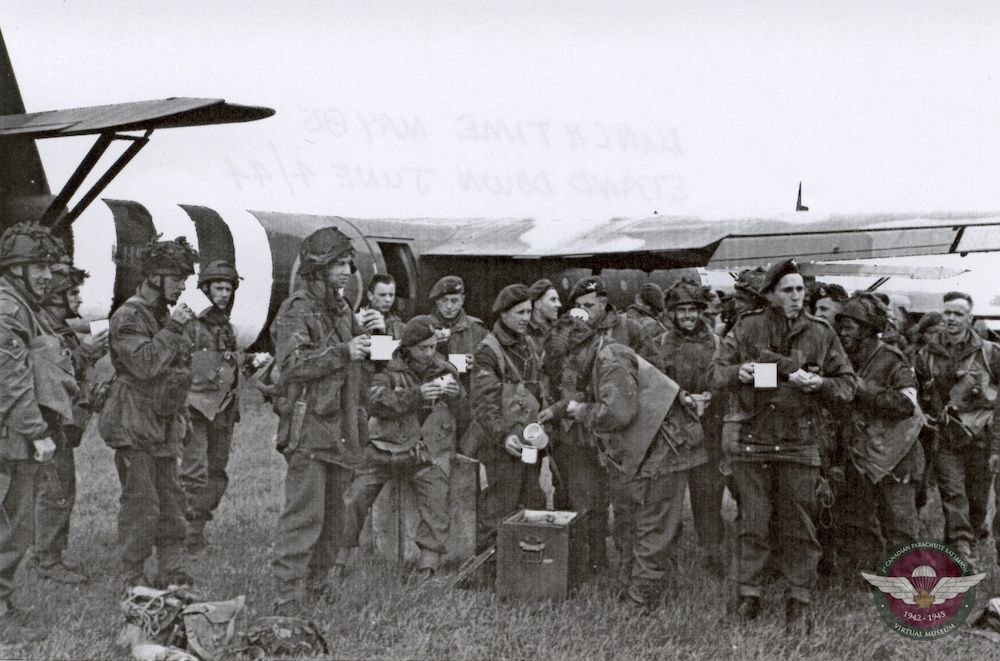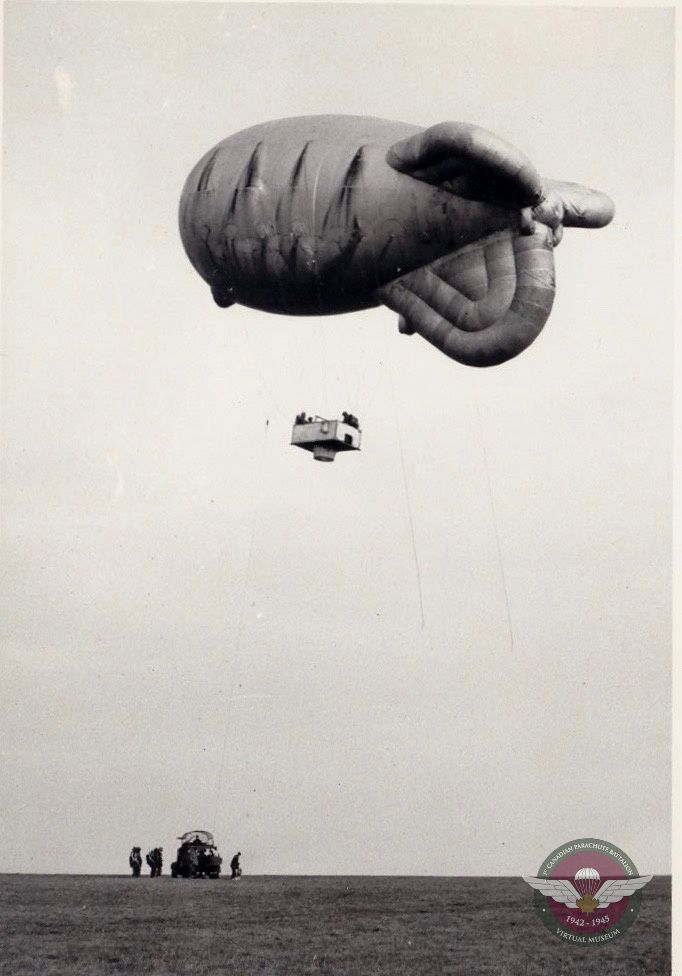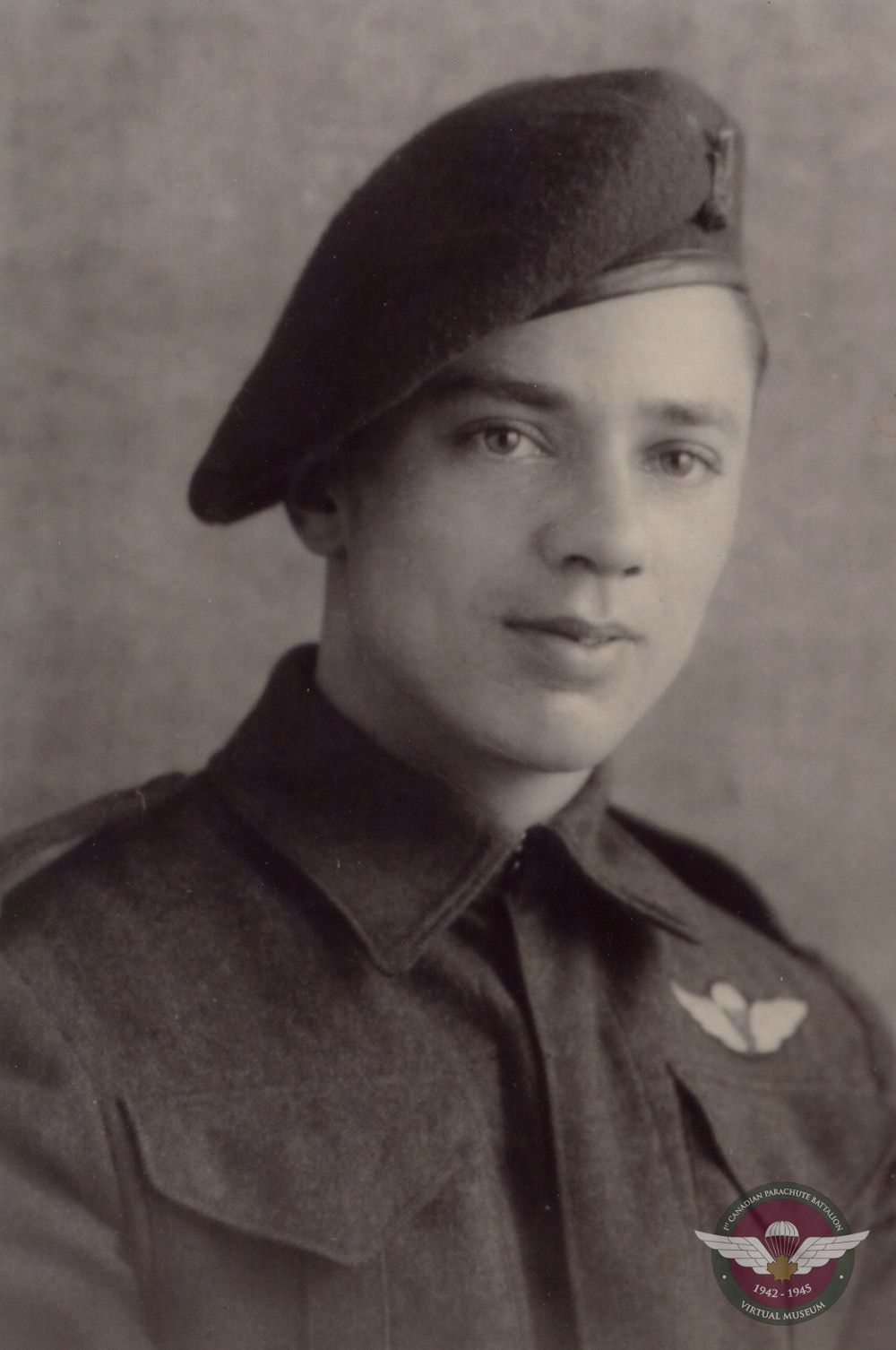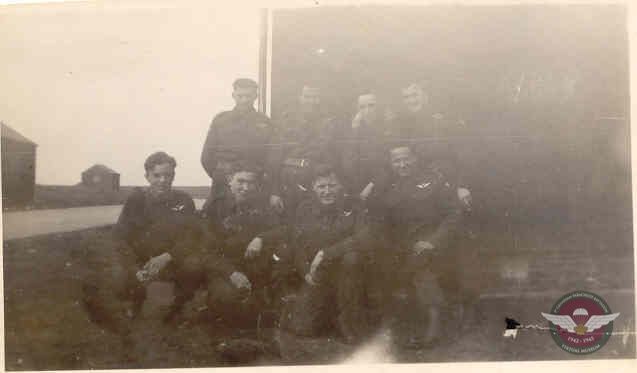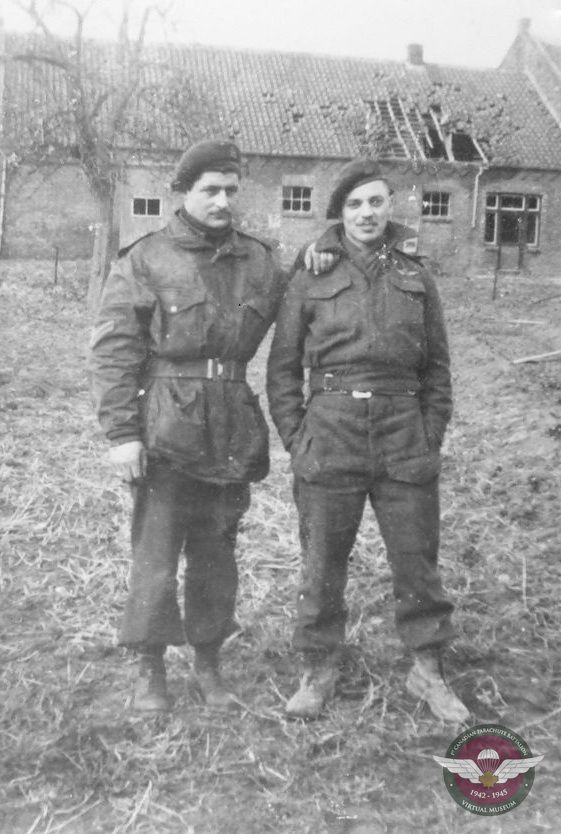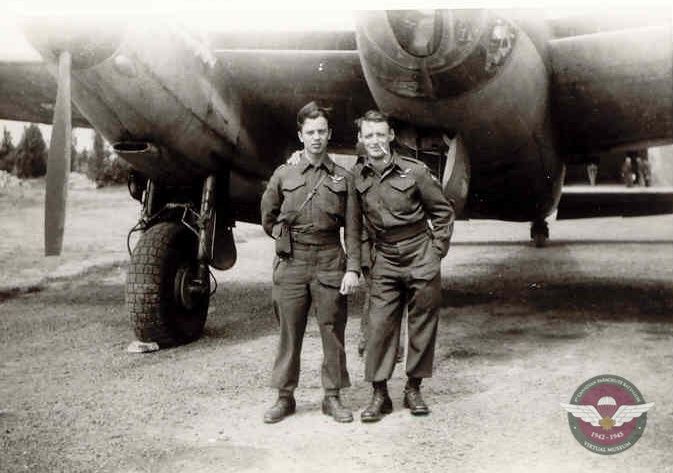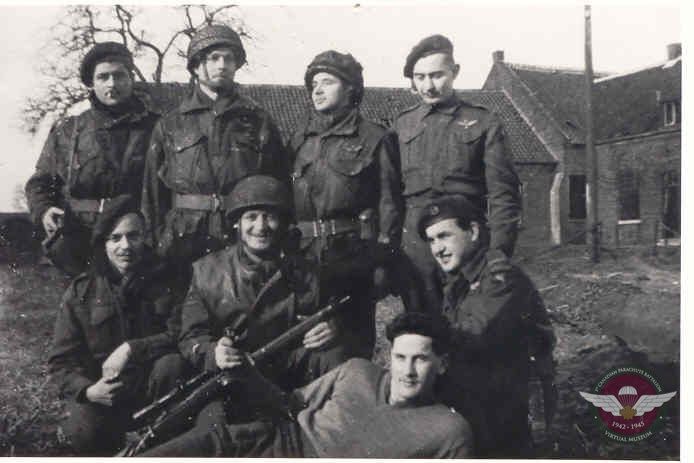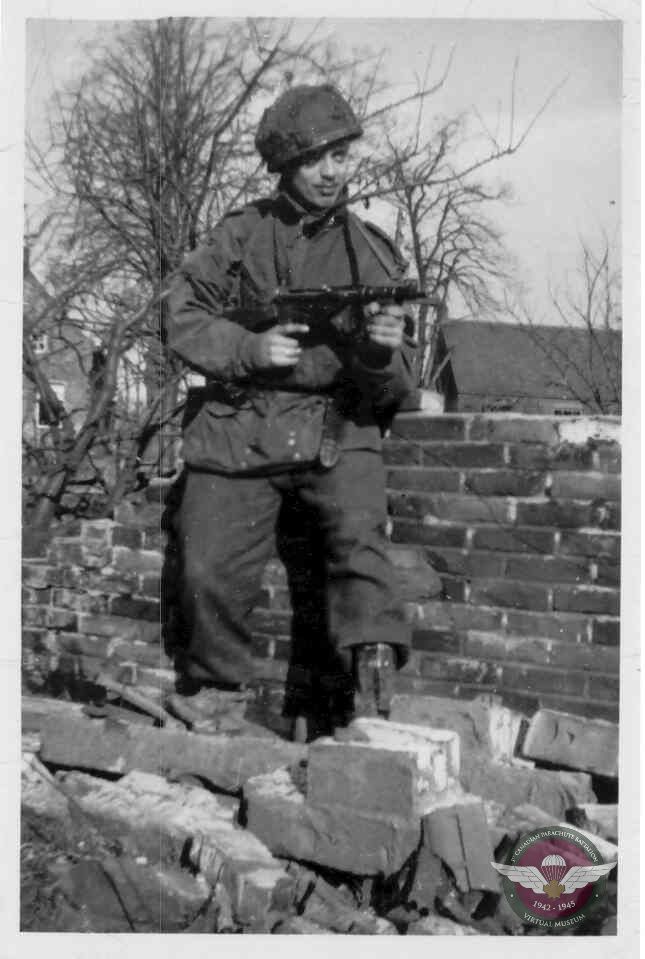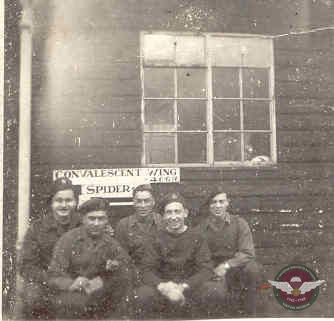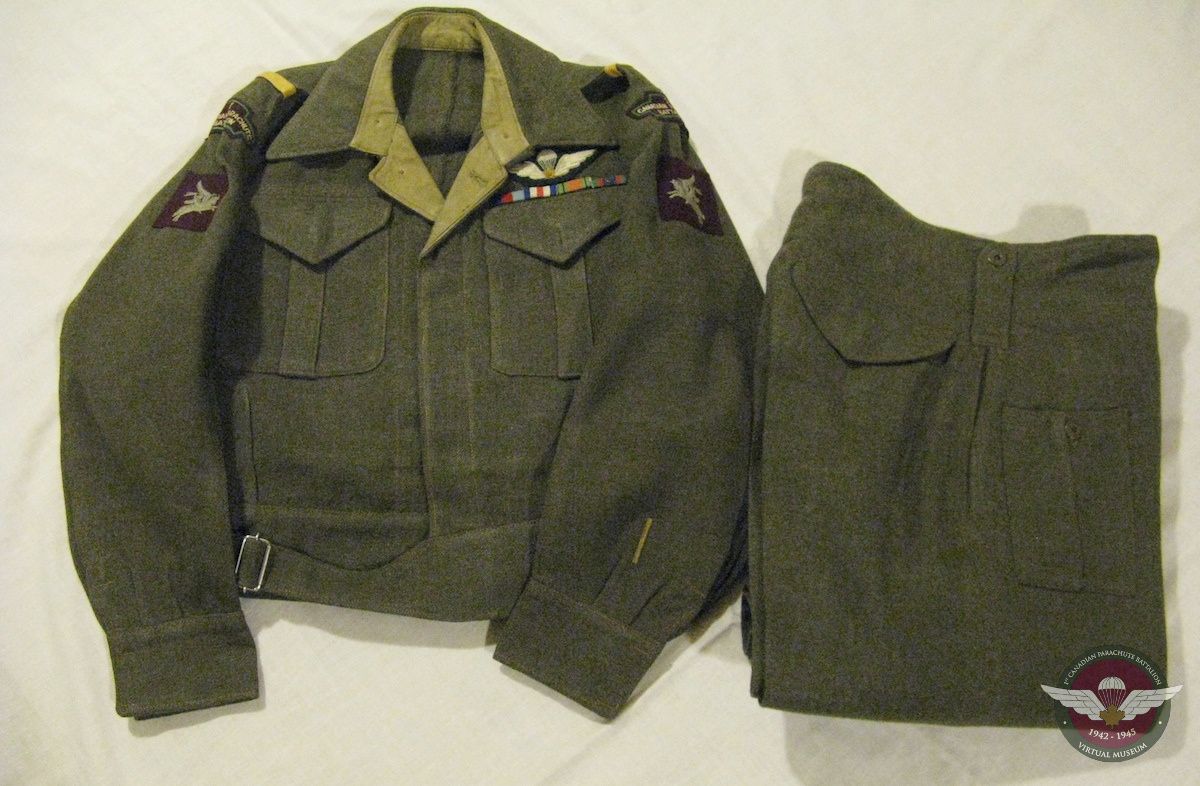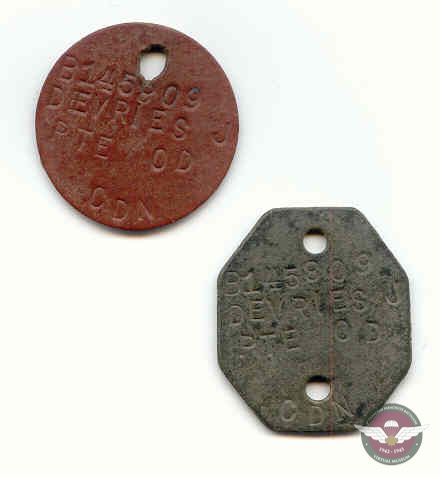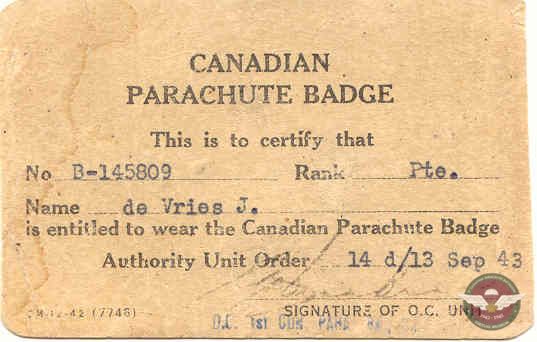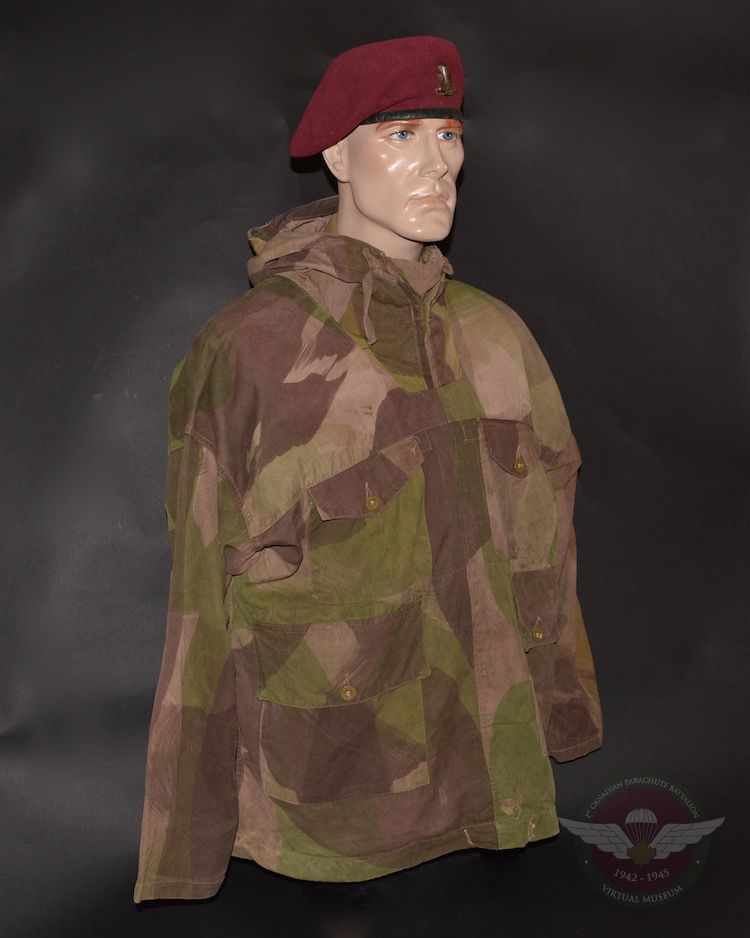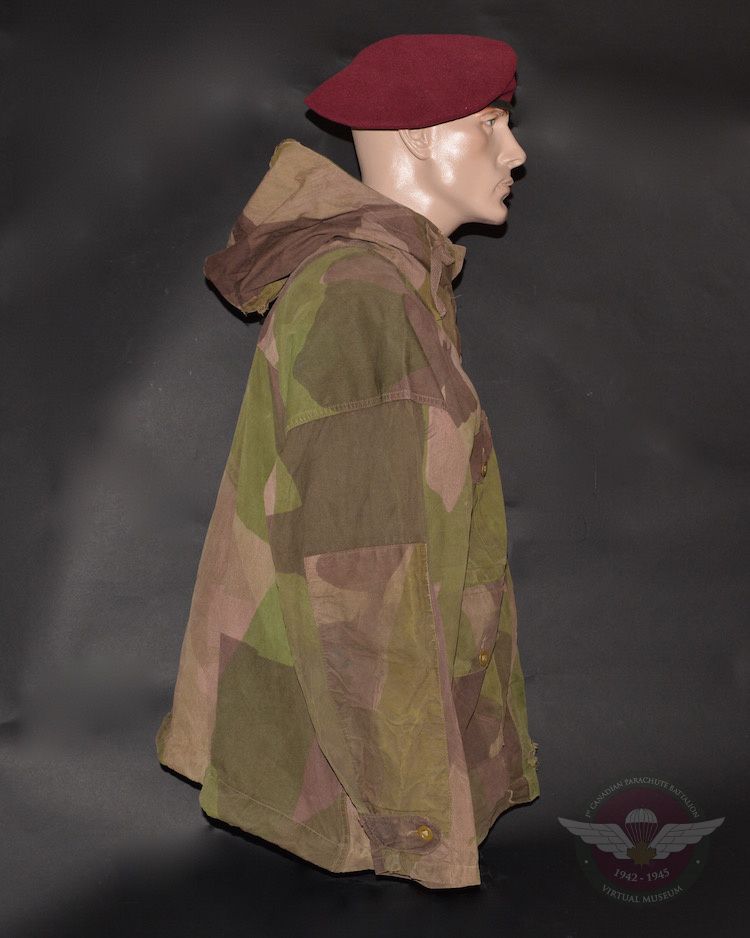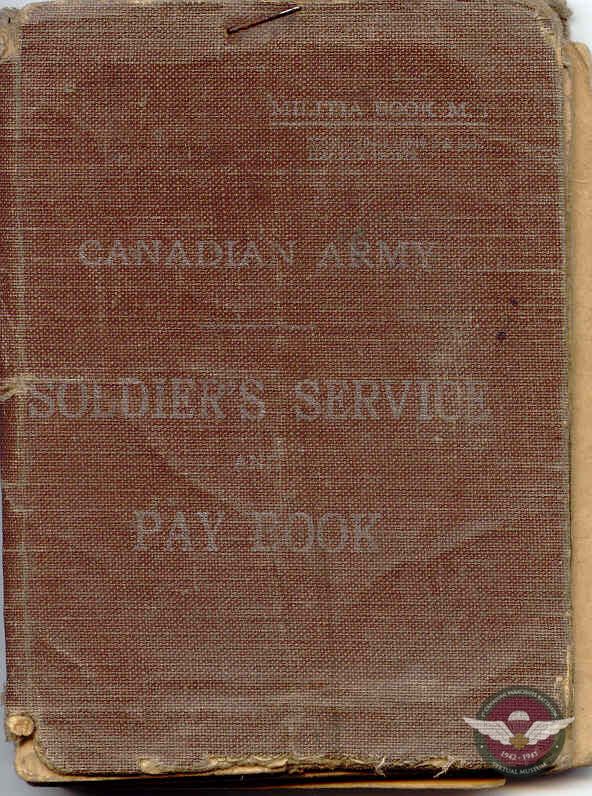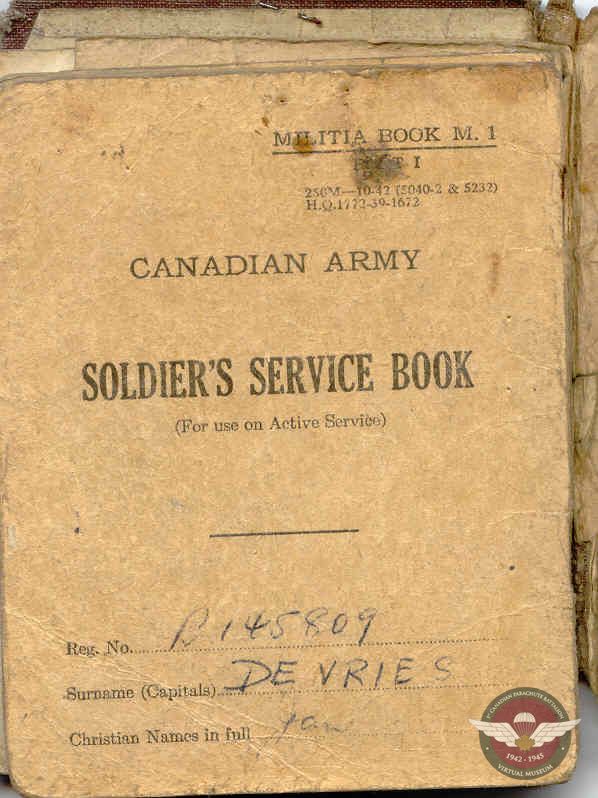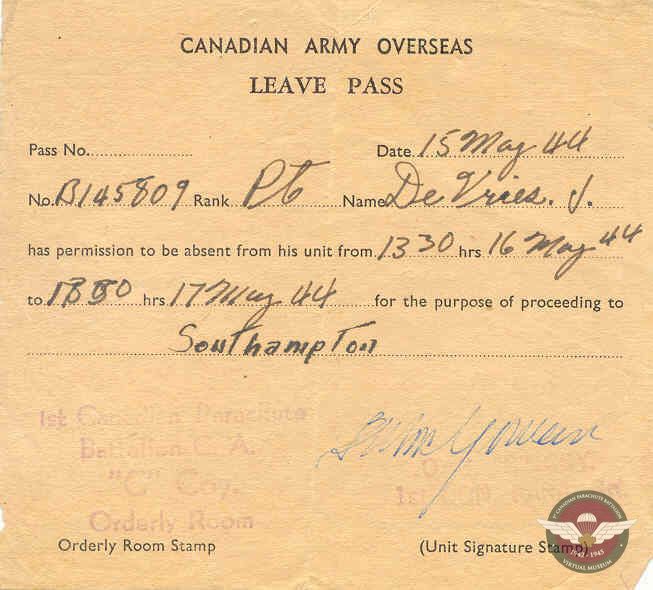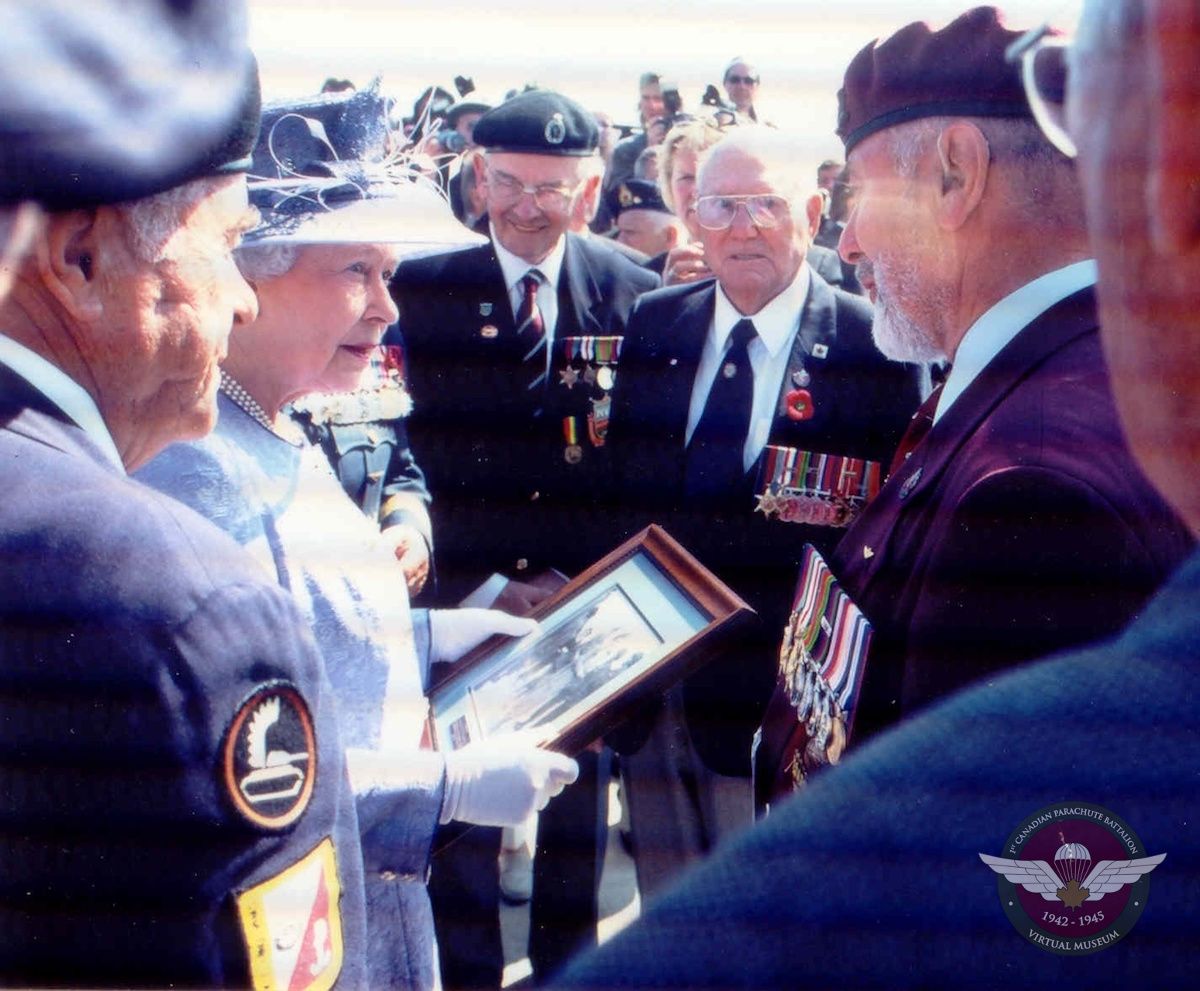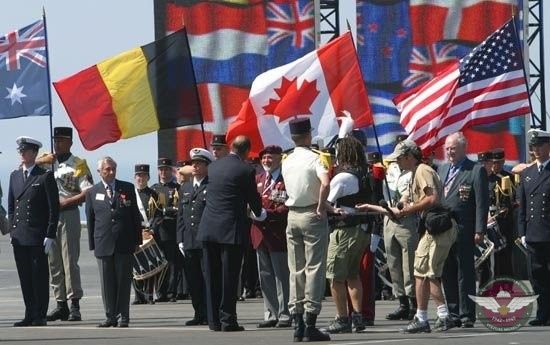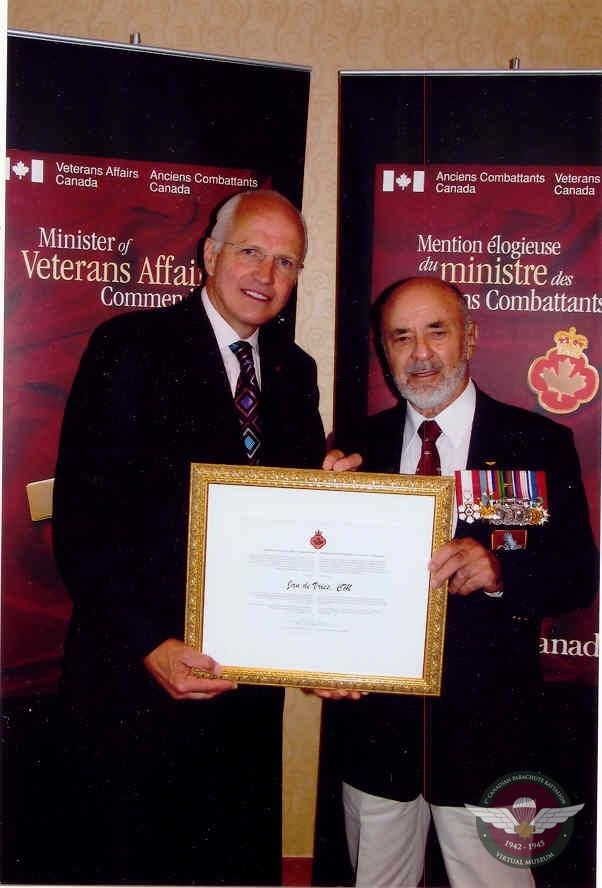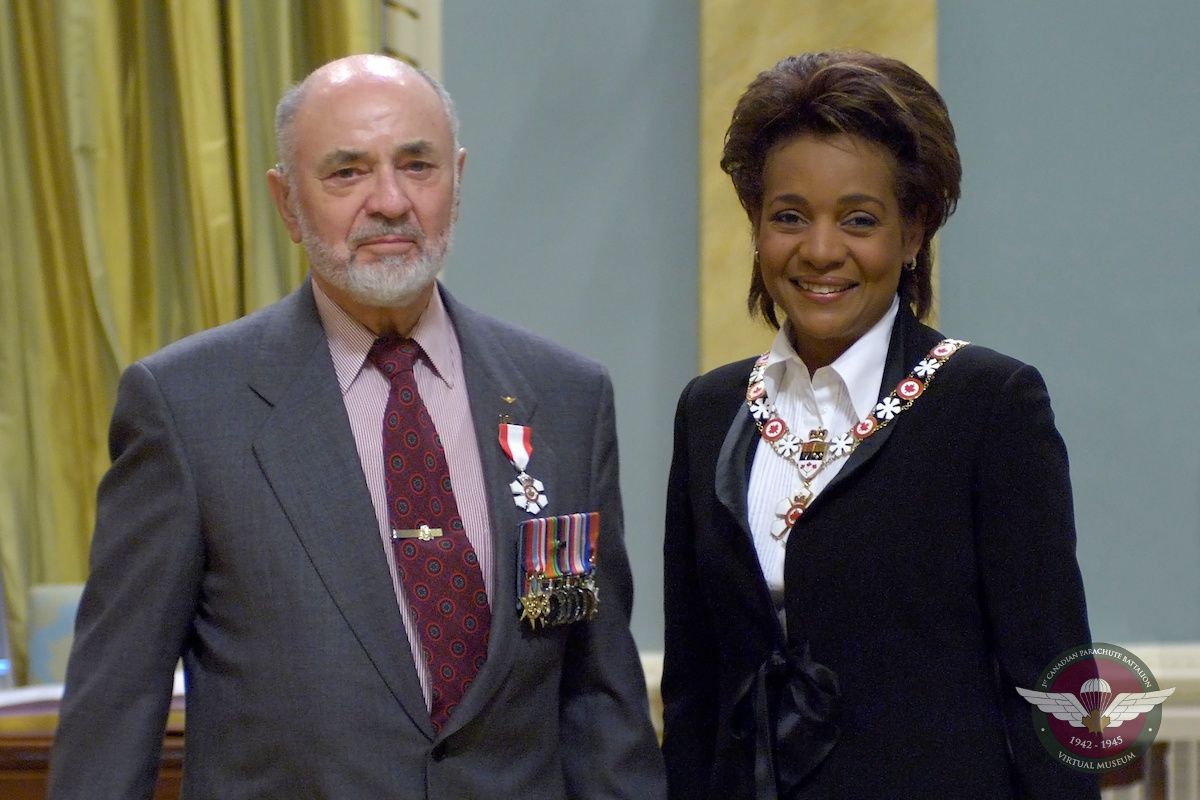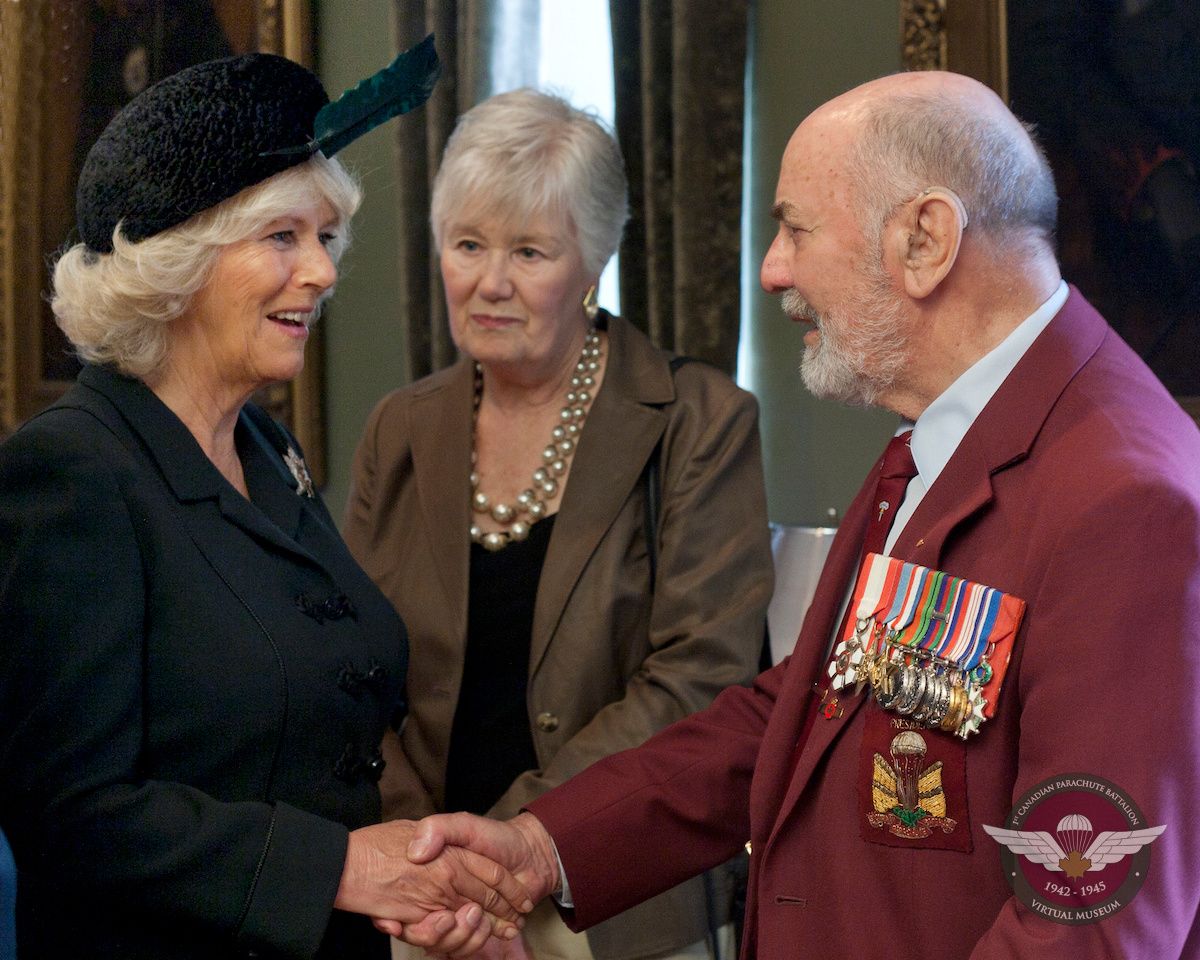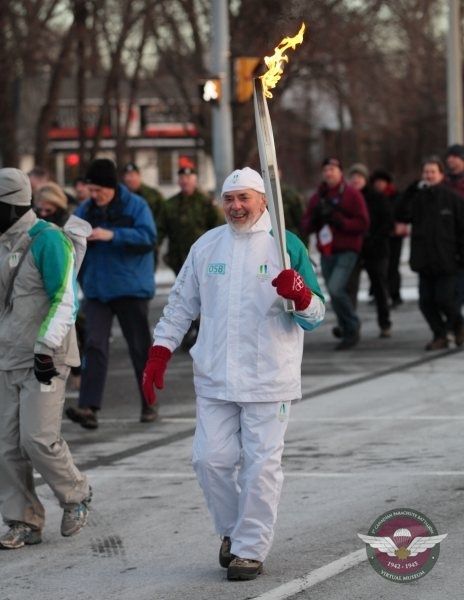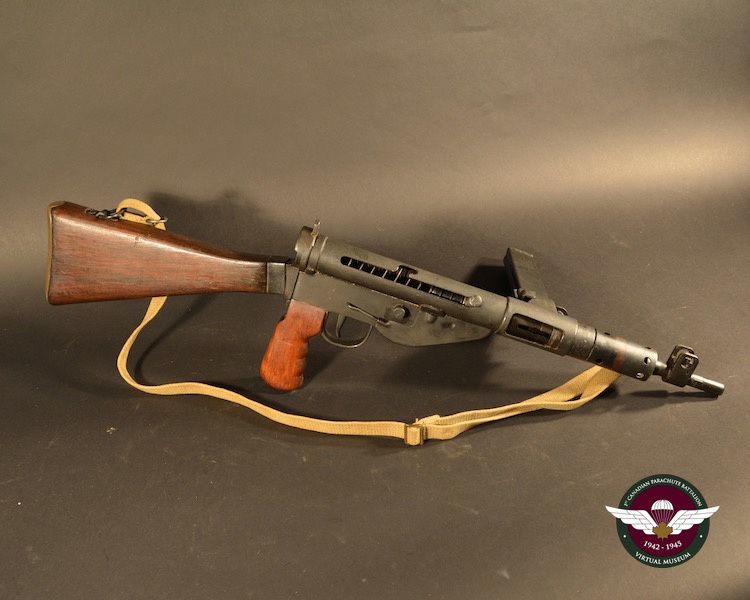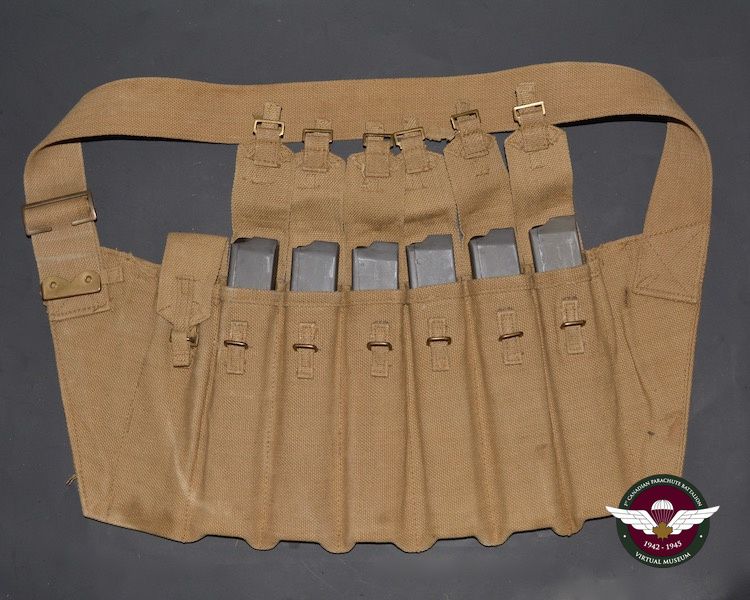Private Jan de Vries, C.M.
Jan de Vries was born in Leeuwarden, Friesland, in the Netherlands on January 24, 1924 to Romke and Rinske de Vries. He immigrated to Canada with his mother and older brother Hendrik in May1930. They joined his father in East York, who had immigrated four years earlier. Jan was enrolled in Secord Public School that September. Jan loved the outdoors, participated in a variety of sports, and was always ‘on the go’. He spent many hours with friends at Dentonia Park near Danforth and Victoria Park Avenues. A few doors from him on Sutherland Avenue lived his close friends Don and Fred Barnard. Both Don and Fred eventually joined the Queens’ Own Rifles; sadly Don was killed on D-Day.
Jan entered East York Collegiate at the age of 13; then Scarborough Collegiate at the beginning of Grade 10. His brother, Hendrik, had left home at 16, lied about his age and joined the Army. His father was now without help at his Service Station. In January 1939 just five days following his 15th birthday, Jan left school to work full time with his father who had an excellent reputation as a mechanic. Then for about a year Jan drove a light delivery truck for George Fuller Meat Packing Company. During 1941 he took night classes in Machine Shop Practice at Danforth Technical School in Toronto, and then worked at Research Enterprises Ltd. in Leaside as a machine operator, Pantograph (engraving).
When Jan was 18 he applied for the air force but it was discovered he had slight colour-blindness so could not be considered for air crew. He was in limbo for a while, not knowing which branch of the Army he wanted to join. One day early in 1943 he saw a small group of Paratroopers in downtown Toronto and was greatly impressed with the Maroon Beret, the shiny brown jump boots; their total appearance, their manner, the way they carried themselves. He decided to volunteer for Paratroops. His military service commenced at Military Depot #2 on the Canadian National Exhibition grounds on 9 April 1943.
He arrived at Brantford on 1st May 1943 and completed his 6 weeks Basic training; then was sent to Shilo Manitoba to begin Paratroops training at the newly opened facility. His training began on 19 June. He was in the first group to begin Para training at Shilo. The three groups in the process of training embarked with the under strength Battalion at Halifax on the 23rd of July 1943 on the S.S. Queen Elizabeth. Assigned to C-Company, 8 Platoon, his training continued in the UK and he received his wings at Ringway on the 11th of September.
Jan recalled, at about 0010 hours on D-Day he was in the body of the cramped converted Albemarle bomber in the skies above Normandy. The 10-man stick was tossed around in the plane due to the evasive action taken by the pilots. When the green light came on the first four men exited but the fifth became entangled when the door came unlatched and was jammed. When the door was finally re-hooked the rest were able to exit. Jan was either 8th or 9th. Jan was a Bombardier, carrying a Sten, a bandolier of seven spare magazines, four spare magazines for the Bren gunner, a two inch mortar and six mortar bombs, grenades of every type, a number of additional #36 grenades, rations, spare underwear and socks, wire cutter, trenching tool, gas mask, camouflage net, fighting knife, and water bottle; in all about 80 pounds.
Jan landed alone in complete darkness, as far as he much later on could determine, somewhere in the area of Colombelles, approximately 7 miles SW of the Drop Zone. It took until late in the day for him to finally arrive at the defence position at the crossroads. Before he was able to complete digging his trench he was ordered to head up the road in a south easterly direction to locate the position of the Germans. Past three or four fields beyond a thick hedgerow and across a road, he saw a great number of Germans milling around a house. On return to his position he reported the location and not long after, the Navy shells could be heard. On a subsequent patrol it was found that the house had been destroyed and there were huge craters all over the place. (In 2014 while some digging for construction of a building was taking place in that area, the bodies of five German soldiers were found at the bottom of a crater.)
Much of the fighting in Normandy in which Jan was involved were patrols. It was the second or third day in Normandy before a necessity presented itself that he had to fire his Sten gun. His patrol came across a German patrol. The first to fire were the ones with the Brens and rifles. Jan jumped in a nearby ditch and fired. To his utter horror only one round came out. He discarded the magazine and put in another and fired. Again, only one round came out. Fortunately the Germans were not, for some reason, anxious to fight and backed off. It was found that after a few days without firing the fully loaded Sten, the spring was not strong enough to push up the rounds. Loading the Sten with only 20 rounds solved the problem for the future.
12 June 1944 was one of the worst battles Jan experienced. He was one of the group of about 40 C-Company men led by Brigadier Hill north in the direction of Breville to the area around Chateau St. Come. They were heading toward the sound of a tremendous amount of firing and explosions. The Germans were breaking though the 9th British Battalion lines. Nearing and arriving at the Chateau mortars and bullets were whistling overhead. Bren gun carriers were in flames with exploding ammunition; dead bodies and wounded all around; total confusion. The men were ordered to spread out, dig in, and prepare for an attack. Jan was only able to scratch out enough in the hard chalky ground to get his body barely below the surface. Not long after, three Sherman tanks one after the other came up, stopping about fifty feet in front blocking Jan’s view. Each in turn was hit and burst into flames. Jan recounted that the airbursts were terrible. He was fortunate to miss being hit by shrapnel when a shell hit a tree near him. Again the Navy was called in for support and the Germans with tanks and other artillery in the village of Breville were shelled. The big shells could be heard whistling overhead and they broke up the German attack very effectively. As darkness closed in the shelling let up and the men took turns dozing during the night. Fortunately Jan was one of only about 20 of the 40 who made it through unscathed and the next morning he returned to his position at LeMesnil.
On the 31st of July south of LeMesnil near the British 8th Battalion position, Jan was ordered to take the first shift in a trench without camouflage in an open field opposite a thick bush. Jan protested citing that it was obviously a night position, not a day position, and was threatened with being put on charge if he did not obey the order. After about an hour or more staring through binoculars, he found himself suddenly thrown to the back of the trench. All of a sudden he realized he had been shot. Apparently a German sniper hidden in the thick bush had been watching him. The bullet entered his shoulder just above his collar bone near his neck and exited through his upper shoulder at the back. He called for help and one of his comrades ran from the hedgerow and jumped into the trench. He put a field dressing on Jan’s shoulder and they ran to safety. Medics attended him and dressed the wound. He was evacuated to a Canadian Army Hospital in the UK. A month later when Jan heard that the Battalion was returning from Normandy his request to return to barracks without going to convalescence was granted and he rejoined his Battalion at Carter Barracks on the 8th of September.
Jan fought in both the Belgian Ardennes and Holland then parachuted into Germany on 24 March 1945. As he came out of the side door of the DAK and was drifting down he could hear the firing and became aware of the bullets whizzing by. He was shocked when he looked up and saw holes through his ‘chute’. He could see where he was going to land on the field beside the edge of the trees but just as he was about to touch down a gust of wind caught his ‘chute’ and drifted him above the trees. He came down through one of the trees close to the trunk breaking the branches; then when the ‘chute’ caught in the upper branches it jerked him to an abrupt stop about eight or so feet off the ground. With his helmet shifted down halfway over his eyes, and with all the equipment strapped to the front of him, he could not get his leg up to reach his knife to cut free. He hung there branches falling all around as the Germans raked the trees with machine guns. Finally, two Paras from one of the British Battalions passed below him and Jan called out. The shorter one who had been boosted on the shoulders of the taller one, grabbed Jan’s ankles and the weight of the three of them was enough to pull Jan free.
He had only been on duty a couple of times after arriving in Wismar when Jan was evacuated to a hospital in Belgium on 4 May because of infected feet. When war in Europe was declared over on 8 May 1945 Jan was in the hospital in Ghent missing all the celebrations. He was not discharged from hospital in time to get to England to return home to Canada with the Battalion. He then served with a Guard’s Unit in the UK until February 1946 when he returned to Canada; honourably discharged in April 1946.
Following the war Jan attended Army Trade School and received his Journeyman’s papers. He worked in construction beginning as a carpenter, then rising to Construction Superintendent and Manager on large residential and commercial high rise projects. He finally retired in the year 2000.
In 1990 Jan became very involved in the 1st Canadian Parachute Battalion Association serving as Secretary for five years, and then was elected as President in which position he remained until his death. During this time as Battalion Association President, he was instrumental in placing plaques in memory of the Battalion in both Canada and in the battle areas in Europe. He represented the Battalion Association in the National Council of Veterans’ Associations, served on the Advisory Board of the Canadian Airborne Forces Museum, and the Board of the Canadian Airborne Forces Association.
He was a member of RCL Branch #258 Highland Creek and a founding member of its Living History Speakers’ Bureau; also in an advisory capacity on the fund raising committee for the adjacent Tony Stacey Centre for Veterans Care. He became a dedicated member of the Dominion Institute Memory Project. Yearly he spoke about his wartime experiences and the history of his Battalion to thousands of school students and cadets; as well as to various other groups.
From 1998 to 2005 he served on the Board of Directors of the Juno Beach Centre Association; 2003-2004 the Advisory Board Veterans’ Affairs D-Day Commemoration Committee; 2004-2005 was Honorary Chairman of the Cpl Fred Tophan VC Fundraising Project; participated in the Royal Canadian Mint Commercial for the Victory Nickel for the Year of the Veteran 2005; was Parade Commander for the Veterans’ Parade in Apeldoorn for the 60th Anniversary of the end of the war in Europe and the Liberation of Holland; was the official Guest of Honour and opened the Canadian National Exhibition 19 August 2005.
Jan was recognized by the Government of Canada for his volunteer service in 2001, and received the Special Citation Award from the City of Pickering ON in 2004.
He was chosen to represent Canada and to be presented with the Légion d’honneur from President Chirac in Normandy in 2004. For his volunteer service Jan was awarded the Minister of Veterans’ Affairs Commendation in 2007 and that same year was inducted as a member of the Order of Canada. His name was submitted by The National Council of Veterans Associations, to the Olympic Committee and he was chosen to carry the torch in December 2009 in his hometown of Pickering for the 2010 Vancouver Winter Olympics
Jan’s love for the outdoors and all kinds of physical activities continued throughout his adult life. He skied, jogged, played tennis, and hiked. He was a voracious reader with a strong love of music. He died on 27 May 2012.
Sten MkV
Jan would have carried a Sten submachine gun during the D-day landings, similar to this one shown below. The Sten can be found in several models, the one pictured here is a Sten MKV, produced for the Paratroopers. It was an inexpensive firearm to produce, costing less than $10.00 per unit. It chambered a 9mm cartridge with a firing rate 550 rounds per minute and an effective range of 100 yards. Also shown is a magazine pouch or bandolier that allowed a soldier to carry an additional 30 round magazines. Courtesy of Collectors Source.
